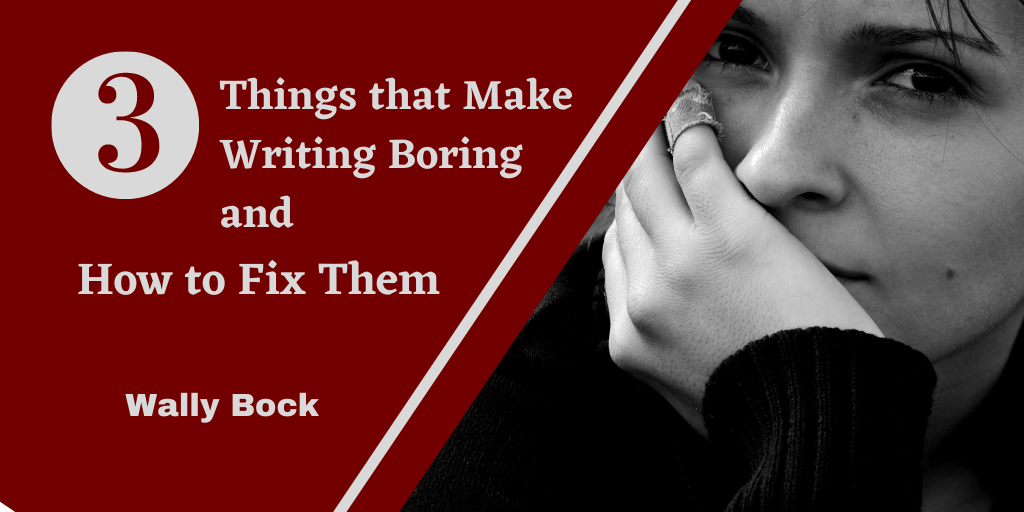 We’ve all read boring writing. If you’re tired from a long day or if you didn’t get enough sleep last night, you may nod off in the middle. You may take a lot of breaks when the writing is boring. You get up to make a sandwich. You take a break to check on whether your plants are growing. You do a quick web search to discover the latest trends in closet organization. And when you sit down after your break and start to read, you sigh heavily.
We’ve all read boring writing. If you’re tired from a long day or if you didn’t get enough sleep last night, you may nod off in the middle. You may take a lot of breaks when the writing is boring. You get up to make a sandwich. You take a break to check on whether your plants are growing. You do a quick web search to discover the latest trends in closet organization. And when you sit down after your break and start to read, you sigh heavily.
You don’t want to create boring writing. You want to write stuff that people like to read and enjoy. Here are the three big things that make writing boring and how to fix them.
Boring Writing Is Hard to Read
Boring writing is filled with complex sentences. Some people really like this, but they make readers work hard. The cure is simple declarative sentences.
Boring writing is filled with passive voice. The cure for this one is simple, too. Use active voice. Write simple sentences in the active voice.
Boring writing is filled with words you should look up. You probably won’t. Most of us don’t. If you want to write things that are easy to read, use common vocabulary. Be conversational. Write the way you’d tell it to a friend.
Boring Writing Goes on Too Long
People love beginnings and endings. They perk us up and catch our attention. They’re also the parts we tend to remember. If you want to write interesting stuff, include a lot of beginnings and endings. Use subheadings to divide up your material.
You and I and the people who read what you write have a limited attention span. For most of us, it’s about six minutes. That’s how long we can read or listen to a speaker without our interest starting to flag. So, change things up every 2,000 words or so.
How did I get to that? Most people who read business books read at about 350 words per minute. Multiply that 350 by 6 minutes and you have 2,100 words. I rounded it to 2,000.
Boring Writing Doesn’t Give You A Clue About Why You Should Keep Reading
When I was starting out, I noticed the great mystery and western writers got me to keep reading. So, I analyzed their books. I found that writers like Louis L’Amour wrote short chapters. At the end of every chapter, they gave you a clue about what you’d find out in the next chapter.
So, how do you apply that to a business book? We’ve already looked at the length issue. Start by telling people what’s in each chapter. Pick up a book by a good business writer. Good examples are Bob Sutton, Adam Grant, Malcolm Gladwell, and Dan Pink. Their chapters tend to fall into a pattern. They start with something interesting, usually a story or a provocative statement. They follow that with a statement of what you’re going to learn in the chapter. That gives you your reasons to keep reading.
At the end of every chapter, they do something like the old Western writers. They tell you what’s going to be in the next chapter.
Takeaways
No one wants to be a boring writer. So, don’t be one. Do the things that interesting writers do.
Use simple sentences in the active voice.
Write like you’d talk to a friend.
Use subheads and other devices to give your reader lots of beginnings and endings.
Don’t write more than 2,000 words before you change things up a bit.
At the beginning of a chapter, share something interesting. Then tell the reader what they’ll get from reading further.
At the end of a chapter, tell the reader what he or she will get from reading the next chapter.
